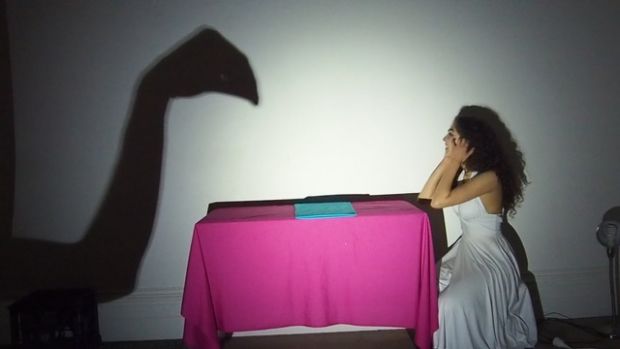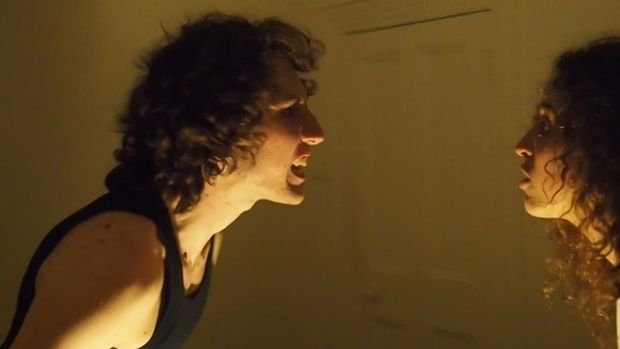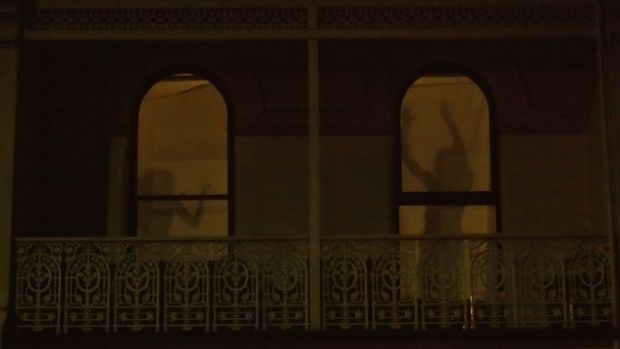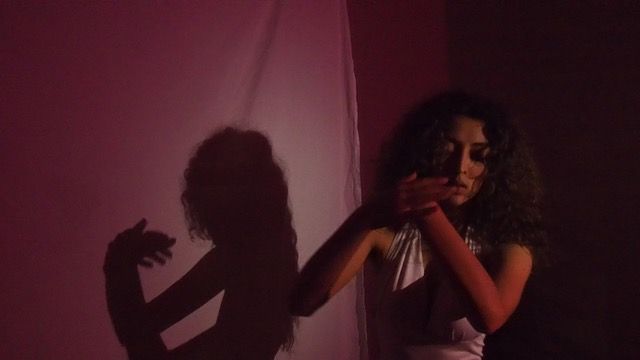Shadow Piece (Alt. Shadow Love)
This short film is an exquisite exercise in the exploration of sound, movement, the body, cinema and urban space. The performance sits in a somewhat liminal space between film and theatre. Yet, it is another great example of how the current COVID constraints can actually produce new modes of artistic expression.
Set in the upstairs front room of an inner-city Victorian terrace, the piece begins with an evocative scene of early evening light that contemplates the quiet and gentle bustle of the street. The shadowy figures in the windows of the upper floor are immediately captivating and lure the camera indoors in a perfectly natural fashion.

Inside this charming house, the two performers create some enchanting movement and exchanges. They enact a story with some endearing romantic overtones. The couple interact both physically and through simple but striking shadow gestures. The musical accompaniment often gives these moments some great dimension but the performance is also beautifully interspersed with the use of natural sounds or the total absence of sound.
The performers are easily able to hold the attention of the audience as their relationship experiences both tender and tragic moments and their emotions are given full expression in dance, stylised movement and exaggerated gesture. This is where the theatrical reference to Bausch is particularly evident. The nature of this performance is rather quizzical; its unconventional format refuses the stage and instead simply incorporates an interior space that evokes familiarity rather than strangeness.

As the ordinary nature of this space becomes clearer, this is where the film takes a self-reflexive moment and exhibits some of the uncertainty and insecurity that can emerge from producing something new and innovative. The discussion among the artists is woven into the show as a kind of behind-the-scenes window into the making of the piece. This works exceptionally well as a concept, although visually it would have been valuable to mark this as a very different space to the performance itself rather than relying on the trope of blurring boundaries.
The camera operates predominantly on the basis of the aesthetic of the long take but not without interesting interjections of movement and editing. This makes the camera an important presence that is not inconsequential to the piece. The dynamic and inventive play between light, shadow, sound, silence, stillness, movement, dance and intense emotion make this a truly sharp piece of theatre that is aptly captured on screen. The imagery and effects that are produced are often sumptuous and arresting.

This show is an intensely delightful and engaging original piece that addresses the circumstances of its creation with insight and foresight.
Patricia Di Risio
Subscribe to our E-Newsletter, buy our latest print edition or find a Performing Arts book at Book Nook.

